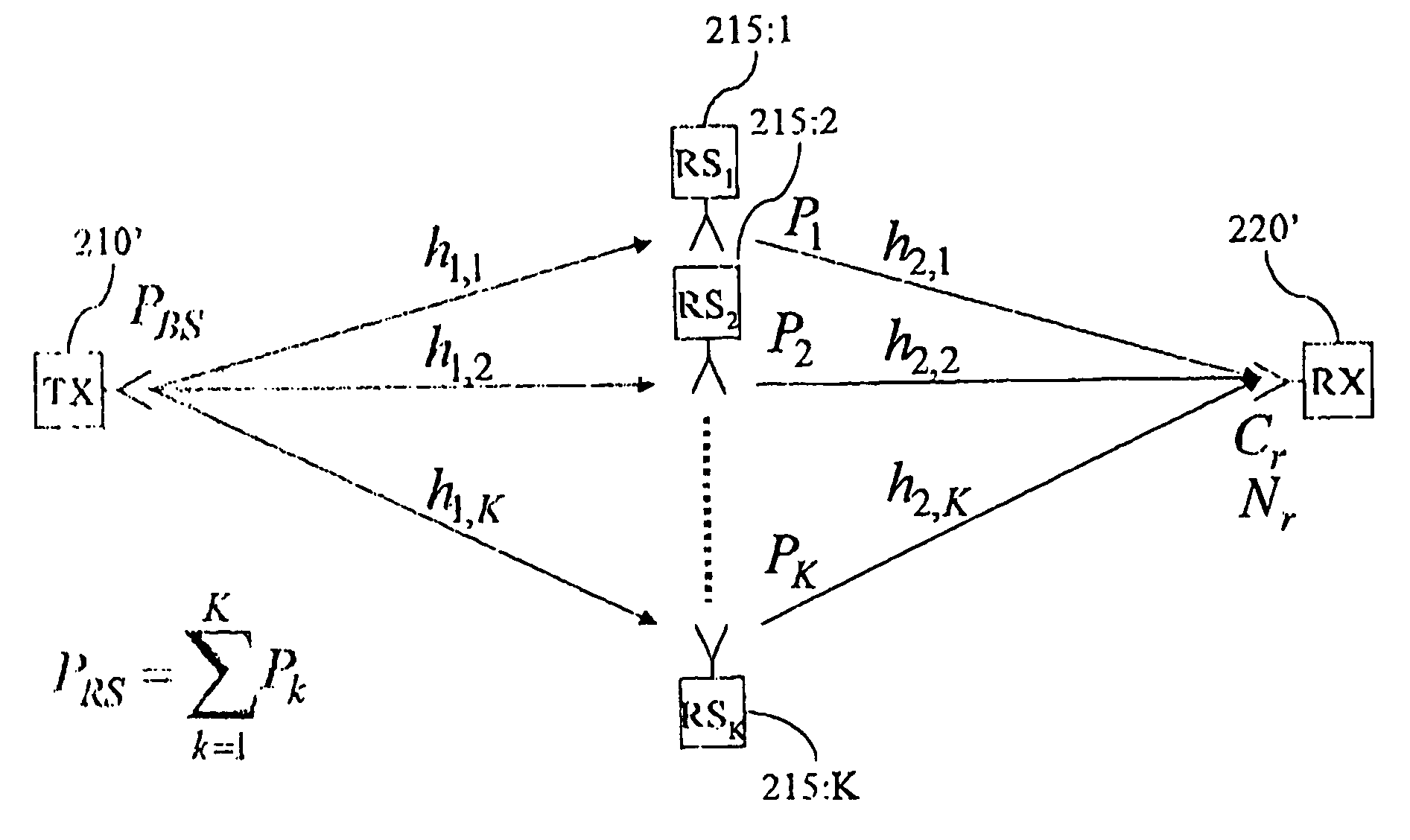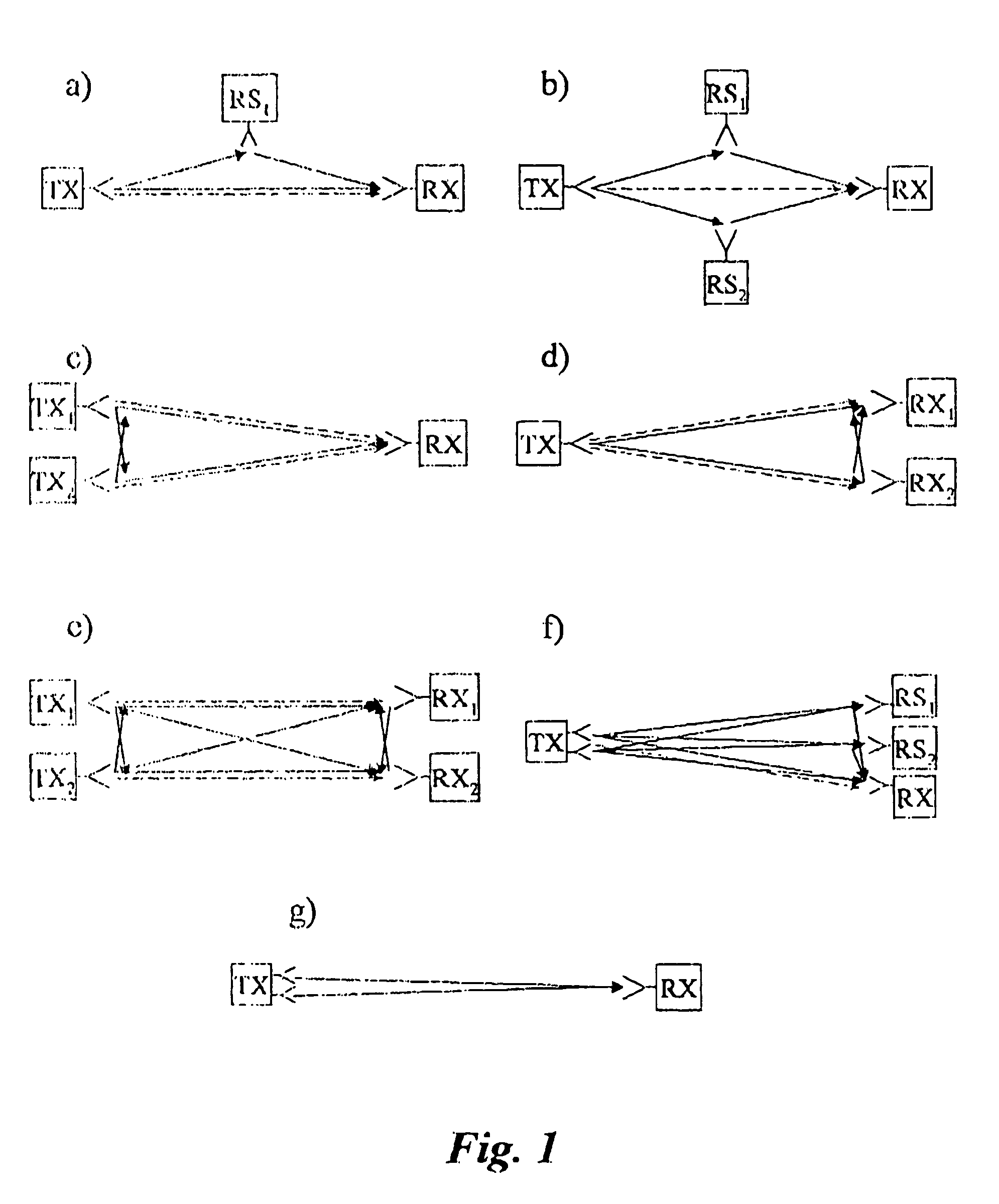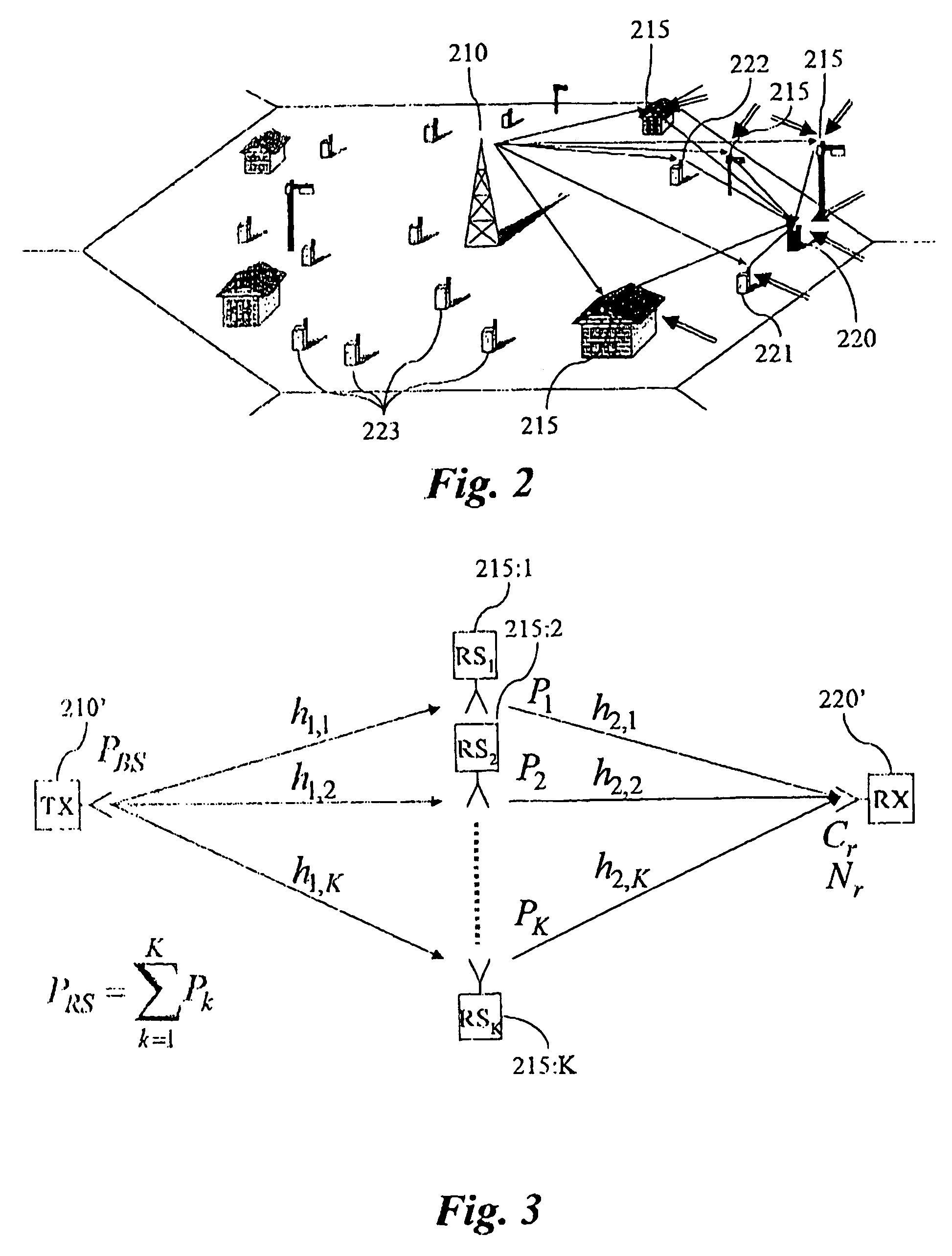Method and architecture for wireless communication networks using cooperative relaying
a wireless communication network and cooperative relaying technology, applied in the field of relay supported wireless communication, can solve the problems of not providing advantages, increasing battery consumption, and affecting the cost of building and maintaining the system
- Summary
- Abstract
- Description
- Claims
- Application Information
AI Technical Summary
Benefits of technology
Problems solved by technology
Method used
Image
Examples
case 1 (see table 1)
[0100, which is of open loop type and suitable for TDD with “sufficient” coherence time, offers the lowest signalling complexity as only two transmissions are necessary and the processing is distributed on all relay stations. Here, the transmitter as well as the intended receiver issue channel estimation symbols often enough or whenever needed such that each relay car track both (complex) channels. The relay station subsequently estimates the channel phases that determine the phase factor of αk.
[0101]A second important aspect for resource efficient communication, apart from phase control, is power control, since it provides means to ensure satisfactory communication quality. The logical architecture and the method according to an example embodiment is readily adapted to be used for an effective power control. The power control method is based on that the effective SNR at the receiver is controlled towards a target SNR, Γ0, which assert the desired link quality. The targ...
PUM
 Login to View More
Login to View More Abstract
Description
Claims
Application Information
 Login to View More
Login to View More - R&D
- Intellectual Property
- Life Sciences
- Materials
- Tech Scout
- Unparalleled Data Quality
- Higher Quality Content
- 60% Fewer Hallucinations
Browse by: Latest US Patents, China's latest patents, Technical Efficacy Thesaurus, Application Domain, Technology Topic, Popular Technical Reports.
© 2025 PatSnap. All rights reserved.Legal|Privacy policy|Modern Slavery Act Transparency Statement|Sitemap|About US| Contact US: help@patsnap.com



